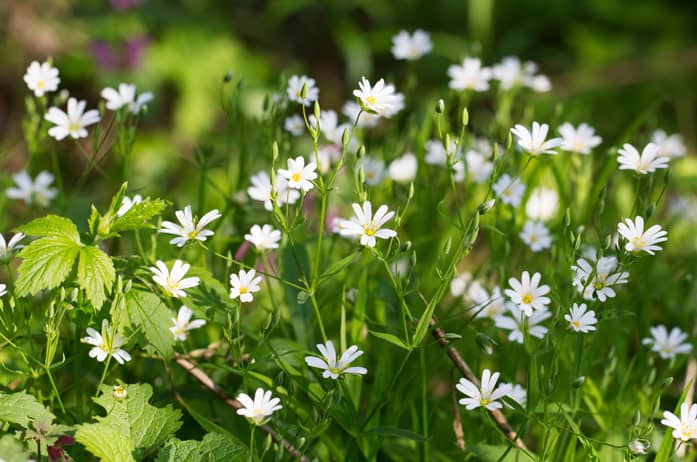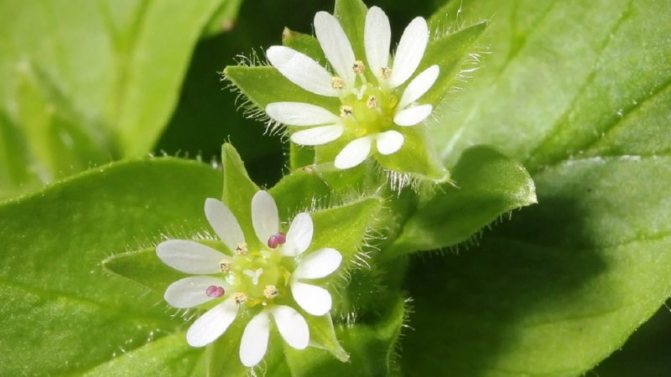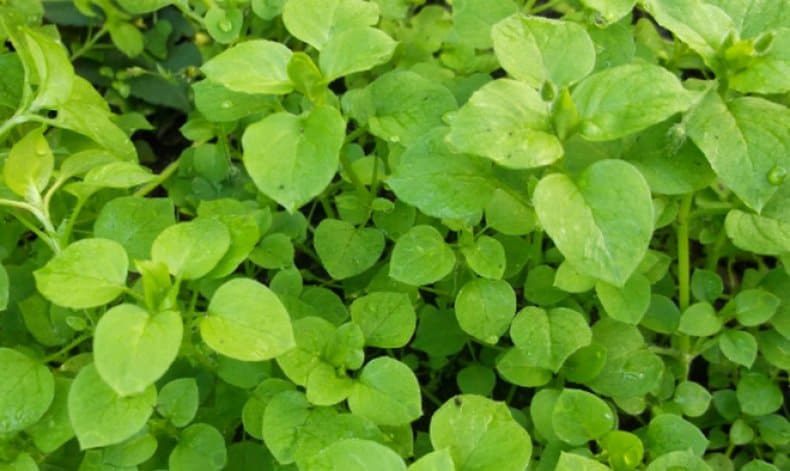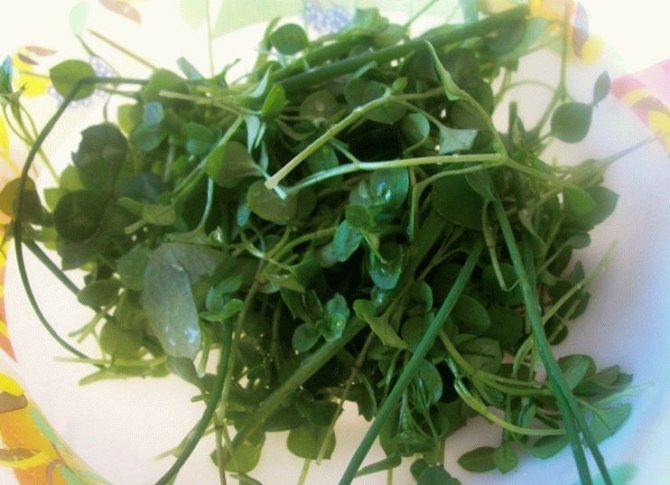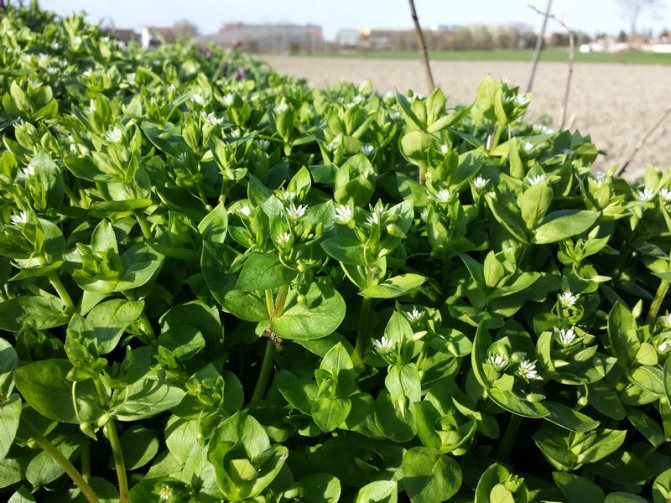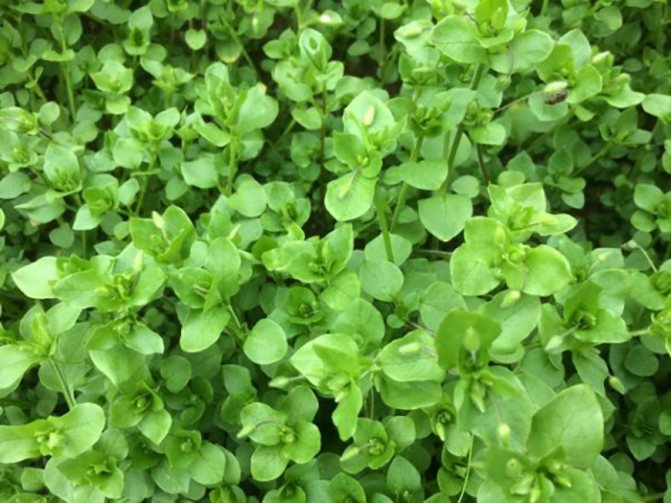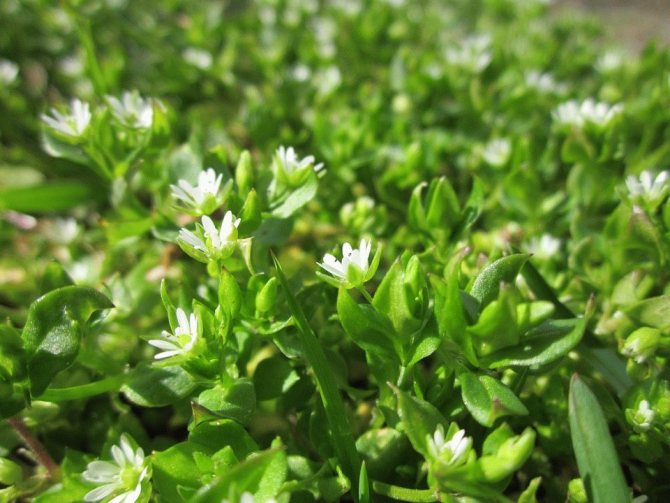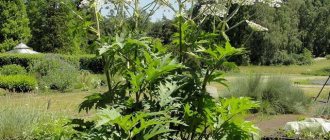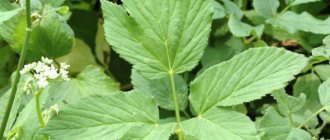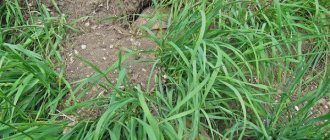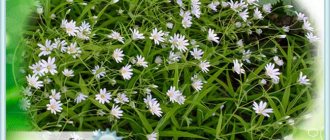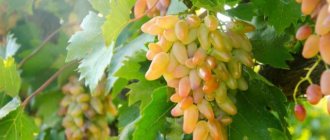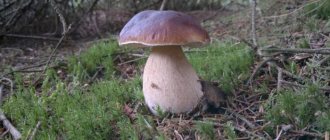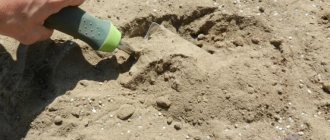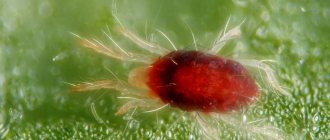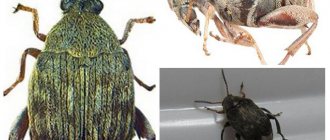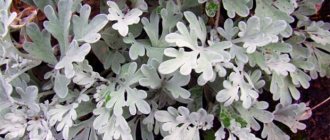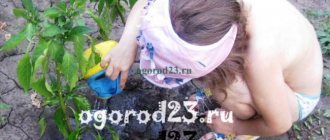On what soil does woodlice grow. How to get wood lice out of the garden
Woodlice growing in a continuous carpet is a serious inconvenience in many summer cottages. When digging, small roots remain in the ground, and the plant only revives with a vengeance.
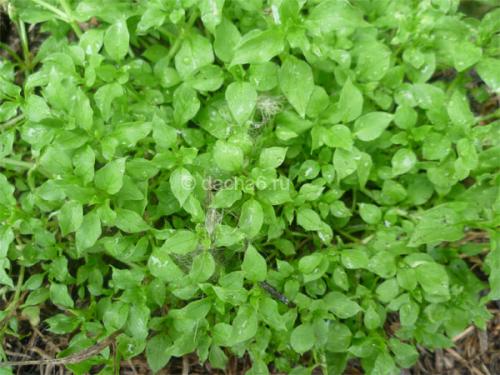
The cycle from seed to adult plant, from which new seeds fall, is 4-5 weeks. Thus, during the warm season, 3-4 generations of woodlice can change. Keep in mind that up to 2500 ripe seeds fall into the soil from one plant. This is why this weed is so dangerous.
How to get rid of woodlice? Consider the most effective methods and prevention:
- This weed grows only on acidic soils. Therefore, from year to year in the fall, when digging, carry out liming by adding ash, dolomite flour or chalk to the ground. Additionally, carry out liming after the snow melts in the spring. Gradually, woodlice will retreat from your site.
- Don't leave even the smallest parts of the weed in the ground. Woodlice is extremely tenacious and can take root from the smallest piece.
- Do not be lazy to weed your summer cottage from weeds more often.
- Woodlice seeds germinate, being near the surface, at a distance of 5-10 mm from it. Loosening the soil with its deepening, sends the seeds to a depth, away from light, where they cannot germinate.
- Cover the aisles of cultivated plants with a black, light-proof foil. Embed its edges into the ground (along the entire perimeter) to a depth of about 10 cm.On top of the film, you can additionally pour 2 cm of soil.
- From herbicides I can recommend the following drugs: "Tornado", "Hurricane", "Roundup". Wear protective clothing when handling. The weather should be calm. You can process it pointwise, for this use an ordinary soft brush and apply the preparation one after the other on each weed plant.
What is woodlice weed?
The annual woodlice (Stellaria media) is a member of the dicotyledonous class of the Clove family. Also, the plant is called the average stellate, wood lice, hernia, canary or heart grass. The weed got its main name because of the stem, the surface of which is covered with small hairs, and along the edges of the leaves there are cilia, which, when touched, leave moisture on the skin.
Favorable conditions for the growth of woodlice are darkened places near houses, vegetable gardens, forest zones, wet fields, as well as ravines and ditches. The plant prefers moist, loose soil. Flowering begins in May and lasts until September. In one season, the weed leaves 10-15 thousand seeds in the soil. Their germination capacity lasts for 5 years. Vegetative propagation is also possible when the stems are rooting.
The branchy creeping stem of woodlice has a cylindrical shape and can grow 10-30 cm in height. Moisture is collected in the plant due to the stem, which constantly absorbs it from the air. The hairs that cover the stem are arranged in one row, however, alternating arrangement of rows can be observed at different internodes.
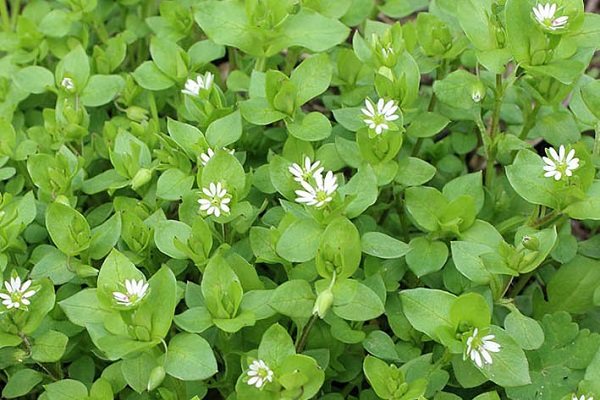

The shape of the root, which has a short length, is an expanded pivotal. The weed is easily pulled out of the ground. It forms heaped enveloping rows, gradually occupying the available areas.The plant has small ovoid leaves, the width and length of which does not exceed 2 cm. The leaves at the bottom of the plant are usually concentrated on the petioles, and the upper leaves are sessile. The arrangement of the leaves is opposite.
White flowers resemble stars in appearance. Long pedicels are decorated with bipartite petals, the size of which is the same as that of the calyx, although sometimes they are much smaller.
Usually one flower has five stamens, less often their number is 6-10 pieces. The appearance of the fruit resembles an oblong box with six leaves. They contain a large number of round or kidney-shaped seeds. They tolerate frost well and keep well under the snow.
Woodlice grass on, what kind of soil it grows. Description of wood lice
The weed has several names, although the popular definition of "wood lice" is fully consistent with its essence. This is due to the plant's adherence to shaded areas of soil with good moisture. If the land is also fertile, then in the warm months woodlice reproduce very actively. The weed is famous for its vitality and high degree of adaptability. Cultural species cannot withstand competition and are often quickly suppressed by their harmful neighbors. On thin, highly branched stems of the weed, moisture (dew) is well retained, which is why the plant received such an interesting name. This ability also allows the grass to survive during dry periods.
Scientists classify the herb weed woodlice in the clove family and define it as the "medium star" or Stelláriamédia. It is an annual, herbaceous, with small flowers resembling stars in outlines.
It blooms in spring and summer, usually from May to late August. The seeds are formed in bolls. They can be either kidney-shaped or round. Like any weed, woodlice produces a lot of seeds. Up to 15 thousand of them can ripen on one plant. The seeds retain their germination capacity for 5 years.
Woodlice propagates vegetatively. Any part of the stem takes root and forms a new plant.
Weed characteristics that describe its characteristics:
- Seeds germinate when the temperature rises to + 3 ° C. Therefore, already in early spring, you can find green shoots of woodlice at different ends of the site.
- The weed has a long growing season, wood lice retains green shoots until the first frost.
- Nodules form on the growing stems, which take root very easily and allow the plant to quickly conquer new areas.
- Ephemeral develops within a month, then dies off. During this time, nodules that are still alive or fallen seeds become new plants. The productivity of the weed is very high. Woodlice does not have a rest period.
Important! If wood lice start up on the site, you need to be extremely careful. Even a small piece of a shoot, casually thrown to the ground, gives new full-fledged stems.
There is another popular name for the weed - bird salad. Domestic birds eat starlet with great pleasure. This suggests that the plant contains many useful components.
Healing properties
The entire bush is considered a medicinal raw material. It is torn out by the roots and dried at temperatures up to 50 ° C. It is important here not to overdry, as with a long procedure, the beneficial properties are lost.
The plant contains alkaloids, saponins, flavonoids and their derivatives: vitamins (mainly A, C and K), lipids, wax. Woodlice herb has medicinal properties due to this particular composition of substances. Starfish is used to treat a number of diseases in different conditions:
- decoctions and infusions of woodlice help relieve pain, cleanse the lungs, increase lactation in nursing mothers; they treat the thyroid gland, liver and kidney diseases;
- compresses are applied to cure hemorrhoids and relieve swelling and swelling;
- juice helps to speed up the healing of wounds, ulcers, frostbite areas and burns, its effective use to treat rashes;
- baths heal and rejuvenate the skin.
Stellate is believed to help with cataracts. True, the effectiveness of vitamin drops based on it is possible only at the very beginning of the disease, characterized by corneal opacity. The herb is also used as a hemostatic agent, strengthening, sedative and expectorant. The herb heals disorders of the nervous system, accelerates recovery from colds, reduces pain with bruises and sprains, improves the efficiency of the heart muscle, and activates the production of hemoglobin.
You should not take woodlice products for those who have low blood pressure, as well as those who are allergic to any component of the plant.
You can prepare medicinal raw materials yourself or buy dry herb at a pharmacy. Wood louse is a valuable plant, therefore, before its extermination, nevertheless, it is worth thinking about: is it really necessary.
On what soil does woodlice grass grow. Woodlice: plant description
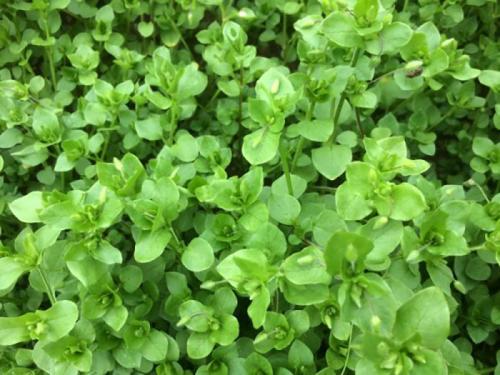

Hardly anyone knows how to get rid of woodlice in the garden forever, but there are effective containment measures. They are based on knowledge of the characteristics of the plant.
Wood lice thickets are difficult to confuse with another weed. Shoots from the central stem spread out in all directions, branching densely, forming a luxurious carpet. Touching damp ground, they root easily, giving the next nests of shoots. Upward, the stems rise by 10-15 cm, covering the entire space underneath with the apical leaves. If you successfully pick up a bush at the base and carefully pull it out of the thickets, then you will have a whole armful of juicy greenery in your hands, and a good bald patch will remain on the ground.
Leaves up to 1.5 cm, rounded, ovate, sitting in pairs on the stem opposite each other. The secret of the fertility of woodlice grass is flowering and fruiting throughout the summer season, from spring to the first snows. The faded stellate in each pod contains many seeds. During the season, one plant gives them up to 15 thousand, and they can germinate in 5 years.
He loves damp places, therefore, on well-fertilized loose beds with regular watering, you have to be especially careful about the weed. It is regenerated from the smallest fragments of the root system left in the soil, which is why just weeding to get rid of woodlice grass forever is an almost impossible task.
Interesting! The dependence of the woodlice starlet on moisture has been noticed among the people for a long time: the petals of the inflorescences closed during the day speak of close rain.
For systemic weed control, knowledge is used on what soil woodlice grows. She prefers acidic soils.
When there is a need to get rid of wood lice
Woodlice are crustaceans, although their shell is not very hard. They are gray in color, usually no more than 1–2 centimeters in size. They are mainly nocturnal, feeding on both rotting plant fragments and fresh shoots. They live only in highly humid places, they especially like to settle in compost heaps. During the day, like slugs, they prefer to hide under any horizontal cover: stones, boards, slate, etc. If there are very few wood lice, you can not sound the alarm, but you should not give them to multiply: you should choose a strategy and start a fight.
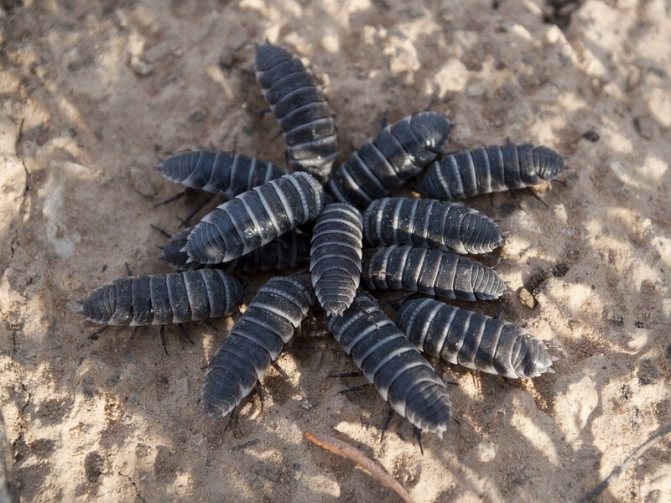

If more than a dozen wood lice gather in one place, soon there will be a lot of them.
Chemicals
If the tools at hand do not help fight woodlice in the garden, herbicides will come to the rescue. For chemical treatment, drugs are taken:
- "Tornado";
- "Hurricane";
- "Glyph";
- "Glysol".
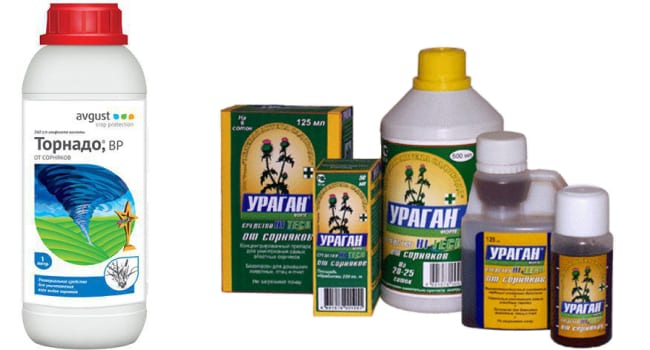

Hurricane and weed tornado
For treatment, the products are diluted with the calculation of 120 ml per 5 liters of water. The solution is enough for an area of one hundred square meters. Spray the grown weeds at a distance of 5-10 cm. In a small area, you can apply the treatment locally with a brush.
Work in calm, windless weather so that the product does not get on other plants. Prepare protection for skin, respiratory organs. It is not recommended to use herbicides near cultivated plants, flower beds, especially during the period of flowering and fruiting crops. Schedule spraying at the beginning and end of the season. Spot treatment can be carried out several times over the summer, at the time of the maturation of the weed.
Gardener Tips
The experience gained from practice is always relevant as it is based on reality and based on accessibility.
A few tips:
- There should not be empty land in the garden - there are always fewer weeds where something grows. After harvesting one crop, early ripening vegetables and green manure plants can be planted on the vacated beds. After green manure on the problem area, weeds become much less.
- With a reasonable compaction of plantings, weeds get less usable area.
- The constant removal of the aboveground part of the weeds at the soil level leads to the depletion of the root system and the weed dies. Digging is not recommended, as damage to the root can give the opposite result - a new plant will grow from a small part of the root system.
- Between the rows, you can lay linoleum or pour fine crushed stone, gravel, crushed brick.
- With deep autumn digging, the roots remaining in the ground freeze.
Prophylaxis
It is almost impossible to prevent the appearance of Stellaria media in the garden. But elementary preventive measures will help to limit the spread of starworm, including regular loosening of the soil, sideriding, destruction of weeds before flowering and seed ripening.
Woodlouse in a few days will tighten the fertilized garden bed with luscious greenery so that in the emerald cool carpet of Stellaria media (and this is the name of the hated weed in Latin), the seedlings of the sown crops will be lost. There is no dispute, the herb is very useful for health, contains so many vitamins, is used to treat many diseases. But, if we are talking about the cleanliness of garden beds, then the reaction of summer residents is the same: to eradicate, destroy, get rid of woodlice on the site forever.
And this is not an easy task, because the unpretentiousness of the grass allows it to grow in any conditions. And the worse these conditions (hardened dry soil, poor soil), the more difficult it is to free the earth from the thinnest roots penetrating every centimeter. Woodlice fights for life no less desperately than the gardener fights with the woodlice itself in the beds.
If the scientific name of the plant is translated into Russian, then you get "average star". Its small flowers resemble stars. And the popular version of the naming of the weed - wood lice - conveys, on the one hand, a negative attitude towards the ubiquitous weed, and on the other, a feature of the grass. Creeping thin juicy shoots intertwine in the finest, but very dense lace where there is enough moisture. Even on the hottest day, running your hand into the thick of emerald thickets, you will feel the coolness and freshness of the moist earth.
Big plantain
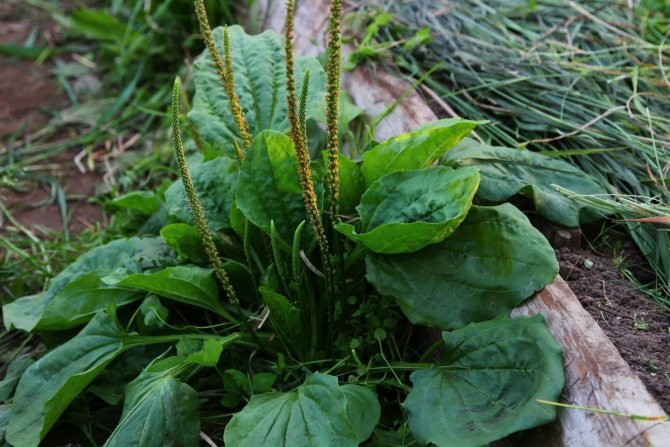

Unfavorable conditions do not frighten the plant at all. Large plantain has roots with a large number of lobes, is insensitive to trampling due to a tight rosette of leaves. Prefers to settle on compacted, light sandy loam or loamy, poorly aerated soil with high acidity.
To combat plantain, you need to prune the rosette of leaves. Then the weed won't grow anymore. In addition, it will be effective to add deoxidizing and improving the structure of the soil, loosen it, treat it with an aerator or pierce it with a simple pitchfork.
Mechanical method
Starting weeding from the first days, cleaning the beds regularly, preventing the growth of wood lice - the goal of gardeners for each new season.The exhausting monotonous procedure requires a lot of time and effort, distracts from other pressing matters. Weeding cannot be avoided, but it can be relieved if:
- At the end of the previous season, the beds that have been freed from planting should be dug up, cleaned and densely sown with green manure. Phacelia, mustard will displace all weeds, improve the structure and composition of the soil in the garden, drive away pests. In the spring, the bed after green manure remains clean for a long time, does not require weeding.
- Thoroughly mulch the planting furrows and holes with compost or humus to prevent the growth of weeds. Before the emergence of shoots, clean all the rest of the space not covered with the mulching layer of wood lice sprouts. So the cultivated seedlings are provided with a clean bed, free of weeds.
- Pulling out wood lice, try to pull out the roots as much as possible. To do this, use forks, especially on dense soil: first loosen without lifting an earthen ball, and then carefully pull the weed out of the soil.
- It is easier to dig out densely overgrown starworms directly in bunches, to free the roots, shaking off the ground.
Video
This summer we turned out to be very humid and wood lice flooded in the beds. As soon as I weed out the beds from her, after three days everything is again covered with woodlice! I complained to my neighbor about this attack, she advised, after thorough weeding, to fill everything up with salt at once.
I did as she advised and next time this weed became much less. After the second procedure, I already forgot about it. In this article I will tell you what harm woodlice can do to a garden plant, how to get rid of it forever in the garden.
